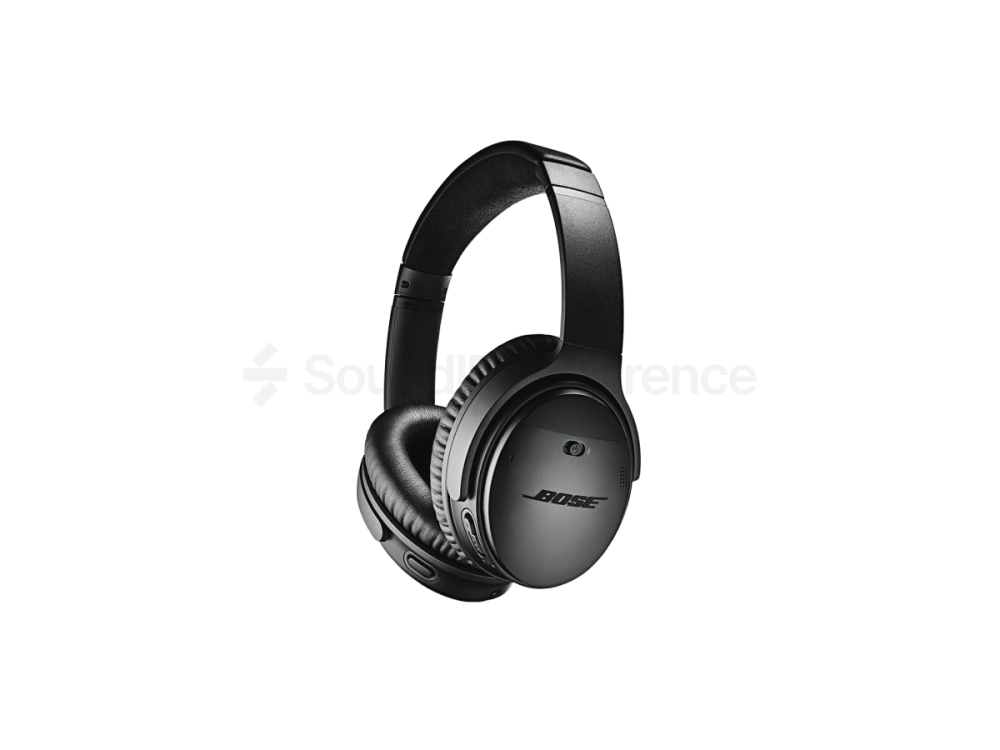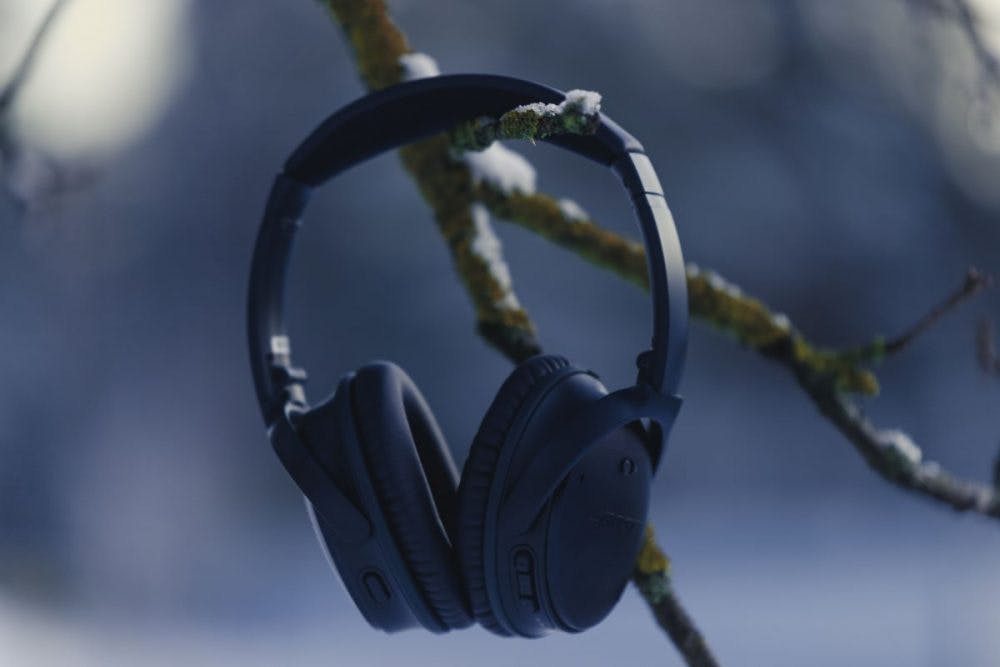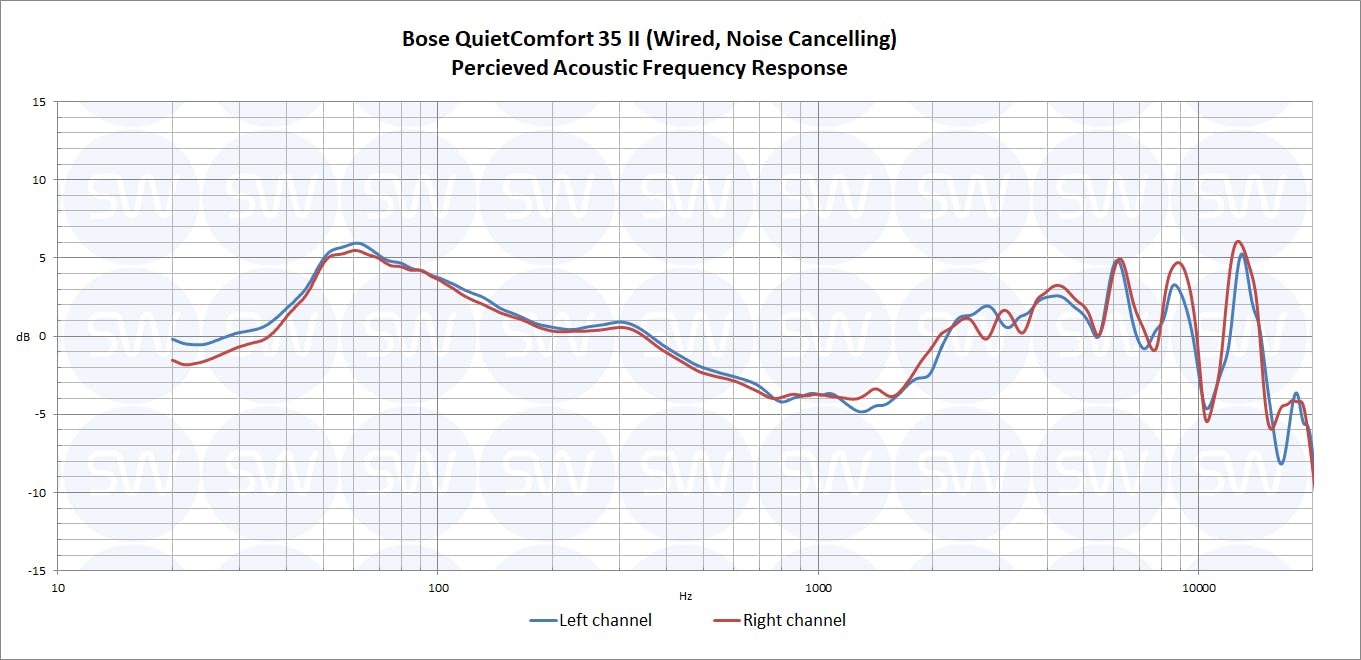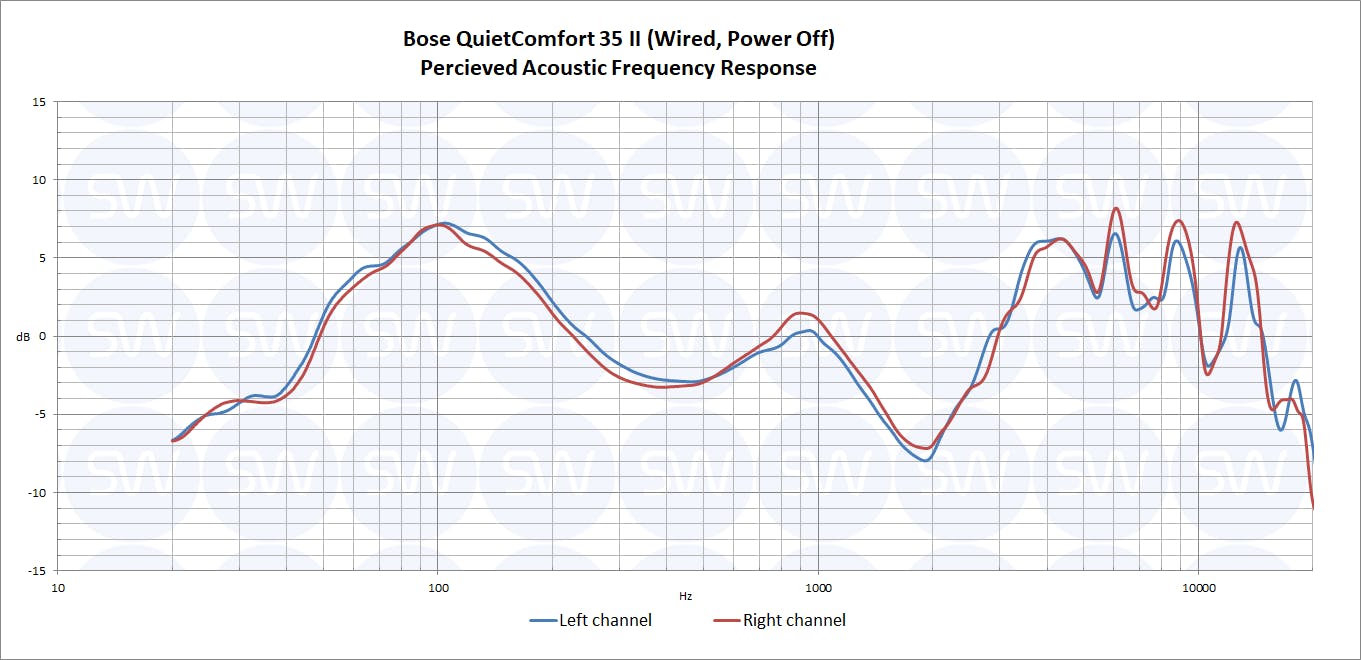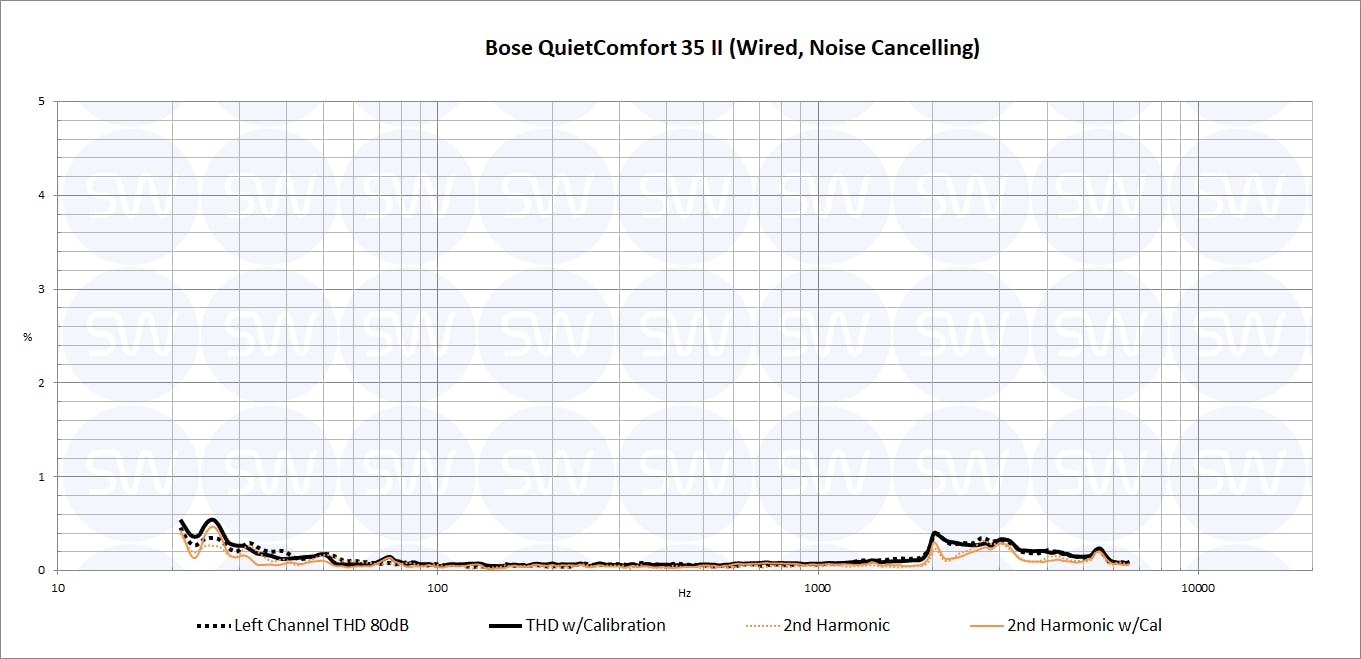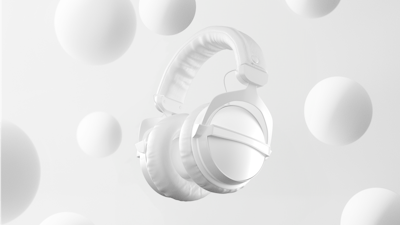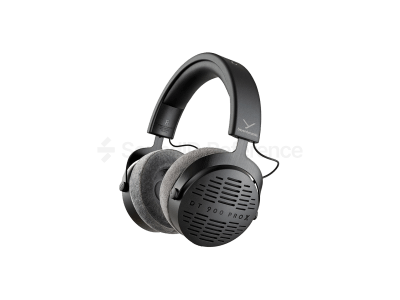Bose QuietComfort 35 II headphones are the latest of the Bose QuietComfort headphone product line. It is one of the most popular Bluetooth headsets with top-of-the-game noise cancelling. But are they any good for something other than cancelling out your daily commute noise?
- Great noise cancelling
- Portable
Pros list with SoundID Reference calibration
- Beefed up low end
- High mid dips and peaks fixed
- Inconsistent sound among users
- High frequency resonances
- Huge sound difference between headphones turned On and Off
As these headphones are designed to be used on the go with either a Bluetooth connection or wired, a designated headphone amp is not a necessity.
Bose QuietComfort 35 II’s are built to be on the move. You can use it either with a cable or in Bluetooth mode. They are made from durable and lightweight materials. Although most of the body is made from plastic, it does not feel cheap. The metal plating on the cups adds extra protection and feels nice to the touch. The hinges of the cups move smoothly and allow to fold the headphones compactly so they fit in the small-sized traveling pouch. The headband is very flexible and allows for various head sizes. Overall this is a nicely built headphone appropriately to the price.
Right out of the box the QC35II are not even close to neutral frequency response and it changes whether the headphones are turned on or off.
First, let’s look at probably the most popular way these headphones are being used – turned on. This is possible either with a cable or Bluetooth connection. There is a mild low end bump but the real issue is with the high mid and high frequencies. A dip between 500 Hz and 2 kHz and uncomfortable resonances above the 5 kHz region colors the sound in the most unflattering way. Although the big ear cups are comfortable, the position of how they are placed on the ear noticeably alters the frequency response.
When the headphones are turned off, the frequency response changes drastically. A significant 5 dB boost at 100 Hz and a massive, more than 7 dB void at 2 kHz region really shatters the clarity at the top end. Using these headphones turned off should be the last resort in case the battery dies.
Up until 1 kHz, the difference between channels falls in 1 dB range but above that, depending on the unit, it may reach +/- 5 dB difference in some narrow resonances. Looking at the sample pool, it can be concluded that there is no channel balance consistency above 1 kHz. Some examples show very similar channels, but others show substantial differences.
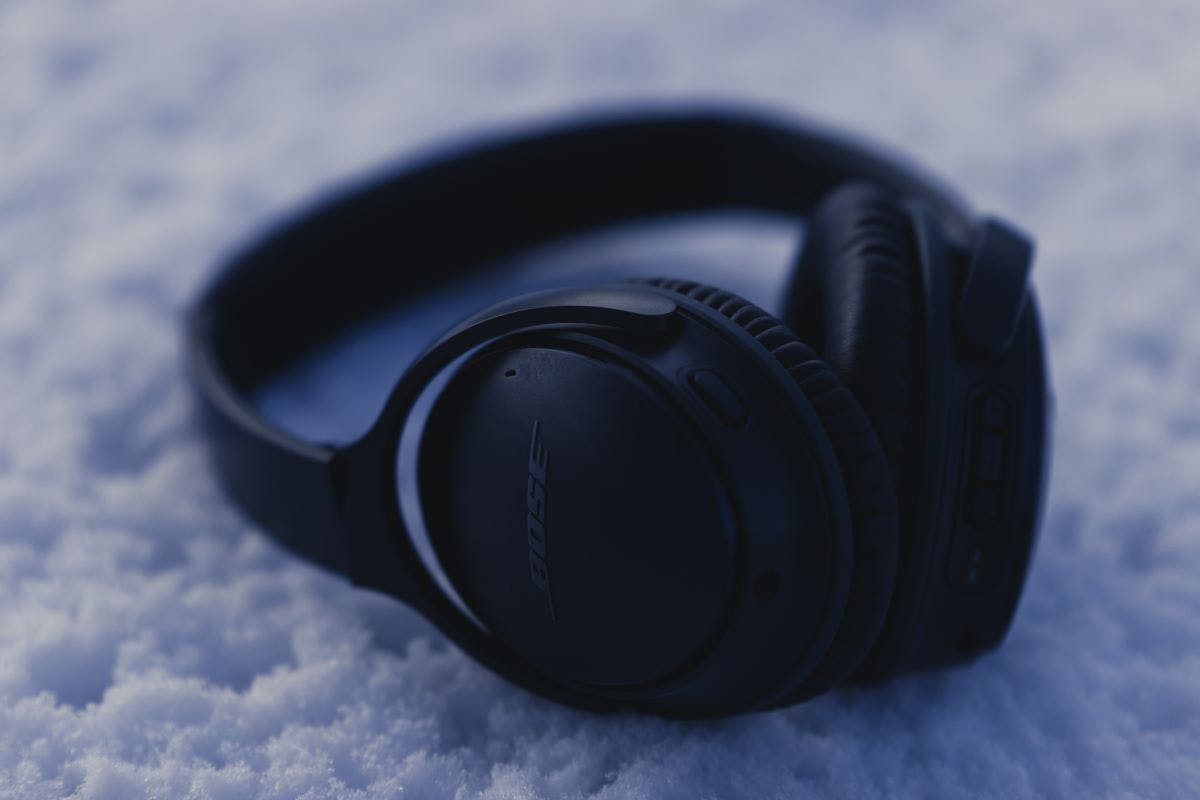
The biggest selling point on these headphones is the noise cancelling and it delivers. You can forget about the daily low end rumble of the city and dive into your tunes undisturbed. The Bluetooth connection is very stable and connects super fast. These are one of the best noise cancelling Bluetooth headphones in the game only rivaled by Sony WH-100XM3 and the rest 1000X series. You won’t get much audio work done with these though, but for your daily needs, these cans will leave you satisfied with your purchase.
These headphones show some minor harmonic distortion below 30 Hz, but it doesn’t even reach 1% and is inaudible. Overall this is a very impressive performance.
How accurate and consistent is the correction effect among different listeners?Not so consistent. As mentioned before, the frequency response of these headphones differs a lot on how they are placed on the ear, so different people might hear the same pair differently.
How much do they differ pair to pair in terms of frequency response?Pairs differ above the 1 kHz range a lot, so the average correction curve, while compensates the major issues, will not be consistent among different users, but the individual calibration smooths out the channel differences very neatly.
Rating
Conclusion
These are not a pair of pro high-end headphones but rather high-end consumer headphones. Frequency response and accuracy might lose here to great noise cancelling and mobility. Nevertheless, these are well-built headphones and the calibration nicely compensates for all that lacks in the sound department.
Final Rating
Calibration Enabled
Calibration
